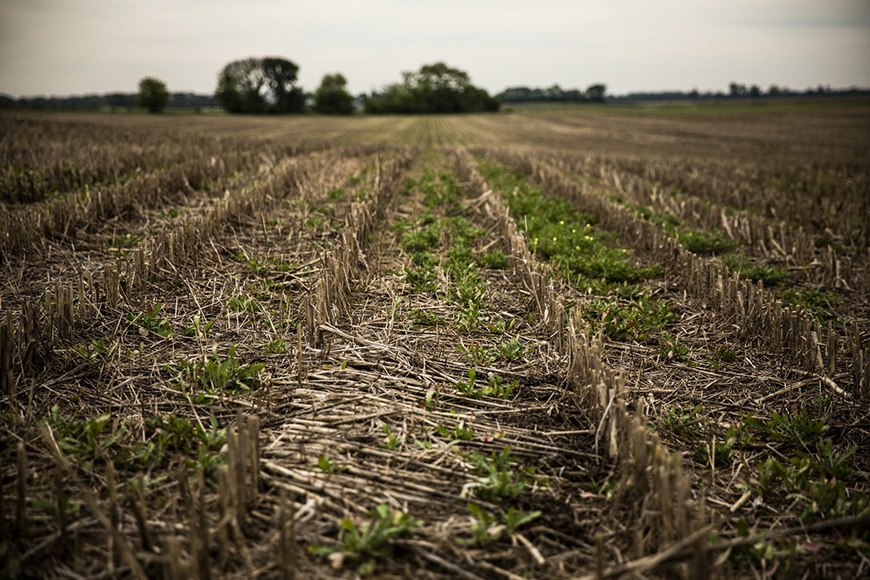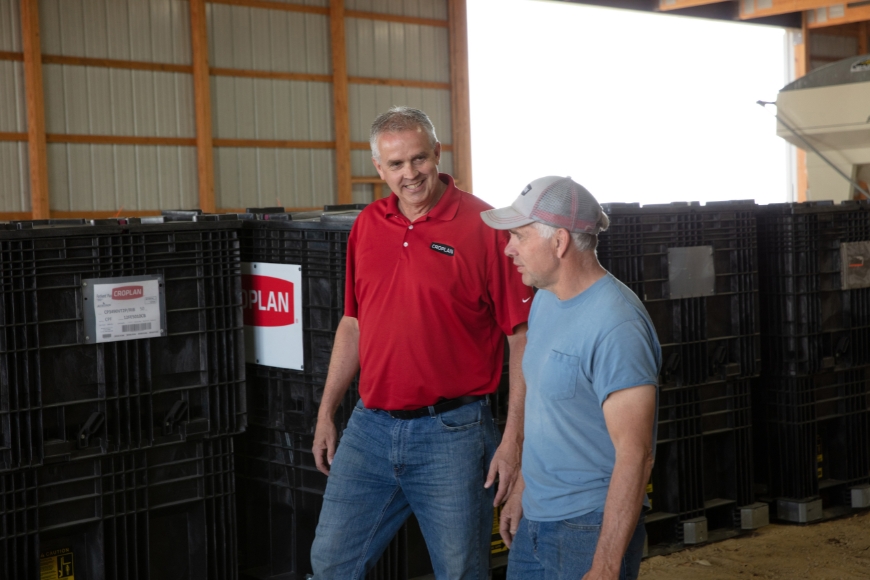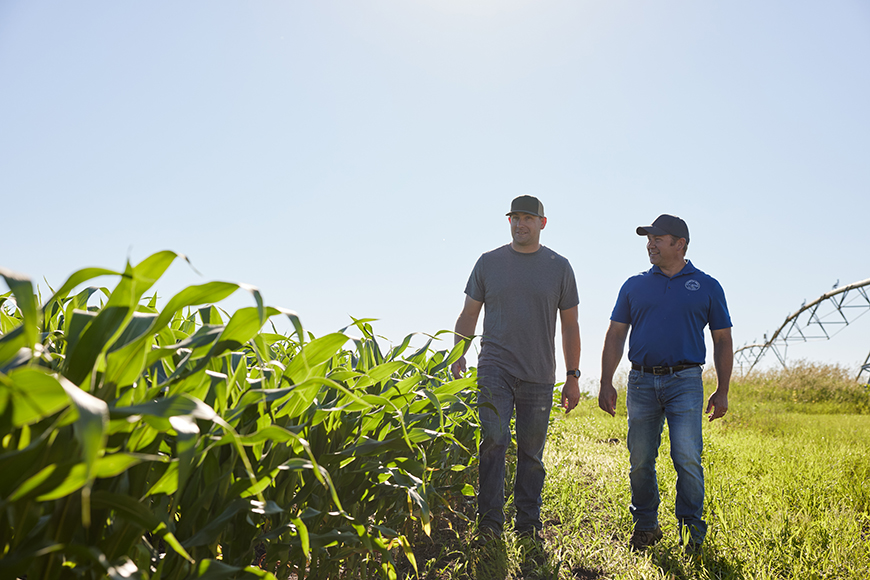Considerations For Your Fall Tillage Strategy

There are many different perspectives on tillage, but, like most things in farming, there’s no silver bullet that works for everyone. What matters most is choosing a method and strategy that works for your farm. How do you make that decision? Here are a few considerations to factor in.
Another reason you may want to get more aggressive with tillage is if you plan to plant a specialty crop like sugar beets in the spring. Sugar beets are planted shallower than corn, so it’s essential to incorporate residue well to maintain a suitable seedbed at 1-inch deep.
Cover crops are a great way to prevent erosion, but they’re not the answer for every situation. For instance, it can be difficult in northern U.S. climates to get a cover crop planted after harvest before the ground freezes. But if you’re lifting sugar beets early for pre-pile harvest, chopping corn silage in late summer or harvesting small grains, you may have enough time to seed a good cover crop. In these situations or in climates naturally well-suited for cover crops, planting something like winter rye can help prevent wind erosion.
Impacts to soil structure are another reason to be conservative with tillage. When a growing plant’s roots penetrate the soil, they make channels and leave microscopic pores and holes. After the crop is harvested and the roots start to decompose, those channels, pores and holes are left hollow, leaving pathways for water to flow through and drain the soil. Tillage, however, breaks through and collapses those natural structures.
Some degree of tillage is often necessary, but the more we can protect soil structures and prevent erosion, the healthier the fields will be long term. It’s not going to look the same for every farm, but we should all strive to do the least amount of tillage possible while incorporating the amount of residue needed to allow soils to warm up appropriately in the spring. In central Minnesota, that may be a moldboard plow. In southern Indiana, that could be no-till. Work with your local WinField United retailer to find the right balance for your operation.
All photos are either the property of WinField United or used with permission.
© 2024 WinField United. Important: Before use always read and follow label instructions. Crop performance is dependent on several factors many of which are beyond the control of WinField United, including without limitation, soil type, pest pressures, agronomic practices and weather conditions. Growers are encouraged to consider data from multiple locations, over multiple years and to be mindful of how such agronomic conditions could impact results. WinField is a trademark of WinField United
Pros and Cons of Tillage
Before diving into the details and attributes of your fields, take a step back and evaluate the overarching pros and cons of tillage as a practice. Primary or fall tillage is done right after harvest to break up the hardpan and incorporate residue into the soil. This makes a nice, black soil surface that leads to a suitable seedbed for planting. This also helps the soil warm up and dry out more quickly in the spring, allowing for earlier planting, which can lead to higher yields. The main drawbacks of tillage are its contributions to soil erosion and its effects on soil structure.Soil Type
The amount and kind of tillage you use depends largely on soil type. For example, soils high in organic matter and clay content hold more moisture, making it difficult to use a no-till system, especially on flat, old lakebed soils with poor internal drainage. Getting fields to dry out in the spring for timely planting can be very difficult in these situations without doing some sort of fall tillage to break up the hardpan. On the other hand, older, weathered soils in areas with warmer, open winters, such as the southern U.S. or southeastern Corn Belt, are much better suited for more minimal tillage options.Annual Precipitation Levels
The more tillage that’s done, the more moisture is evaporated from the soil. So, if you’re in the western Corn Belt where moisture is at a premium, doing the least amount of tillage possible is usually advantageous to conserve moisture.Crops Harvested and Crops to Be Planted
Compared to soybeans, corn leaves three to five times the amount of residue in the field after harvest. In continuous corn systems, getting that amount of residue incorporated into the soil to make way for a decent seedbed can be an undertaking. Often, this is when growers will turn to a more aggressive tillage method like disk rippers or moldboard plows. However, since soybeans leave much less residue, they require less tillage postharvest to incorporate residue.Another reason you may want to get more aggressive with tillage is if you plan to plant a specialty crop like sugar beets in the spring. Sugar beets are planted shallower than corn, so it’s essential to incorporate residue well to maintain a suitable seedbed at 1-inch deep.
Erosion Management
Since erosion is a primary concern with tillage, consider the characteristics of your fields and their susceptibility to erosion. For example, in flat fields, wind erosion is the biggest concern, while for hilly fields, water or gully erosion is more of a threat.Cover crops are a great way to prevent erosion, but they’re not the answer for every situation. For instance, it can be difficult in northern U.S. climates to get a cover crop planted after harvest before the ground freezes. But if you’re lifting sugar beets early for pre-pile harvest, chopping corn silage in late summer or harvesting small grains, you may have enough time to seed a good cover crop. In these situations or in climates naturally well-suited for cover crops, planting something like winter rye can help prevent wind erosion.
Soil Health
While tillage has great benefits for spring field preparation, it’s important to be mindful that it does consume carbon. Tillage stimulates the microbes to decompose residue more quickly, which is a good thing for creating a nice seedbed, but it also burns up organic matter, which releases CO2.Impacts to soil structure are another reason to be conservative with tillage. When a growing plant’s roots penetrate the soil, they make channels and leave microscopic pores and holes. After the crop is harvested and the roots start to decompose, those channels, pores and holes are left hollow, leaving pathways for water to flow through and drain the soil. Tillage, however, breaks through and collapses those natural structures.
Compare Tillage Methods
Various tillage methods are available, each offering benefits and limitations.- Moldboard Plow: This is the most aggressive tillage method, inverting the soil 8-12 inches deep. It leaves less than 15% of the soil surface protected by crop residue. While it still has its uses, it’s not nearly as common as it once was.
- Disc Ripping: This method is probably the most common type of fall tillage today. It tills to a depth of 8-12 inches but doesn’t invert the soil like a moldboard plow. It leaves 30-40% of residue on the surface and leaves the surface rough, which is good for erosion prevention.
- Chisel Plow: This method tills to a depth of about 6-8 inches and should leave about 40-45% residue on the surface.
- Strip Tillage: Like it sounds, strip tillage involves chisel plowing 7–10-inch strips to prepare suitable seedbeds, leaving the ground in between untouched.
- Vertical Tillage: This method has been gaining popularity over the past decade. Vertical tillage chops up crop residue and lightly works the top 1-4 inches of soil. This often works well in the fall when you can do a pass right after the combine and chop up residue to expose more surface area, helping bacteria decompose it more efficiently.
- No-Till: As the name suggests, no-till means no tillage is done. This is the most effective method of preventing soil erosion and maintaining soil structure but it doesn’t allow the ground to dry or warm up as fast in the spring. It can also be challenging to find success with no-till in flat, black, heavy, compacted soils due to lack of drainage.
Some degree of tillage is often necessary, but the more we can protect soil structures and prevent erosion, the healthier the fields will be long term. It’s not going to look the same for every farm, but we should all strive to do the least amount of tillage possible while incorporating the amount of residue needed to allow soils to warm up appropriately in the spring. In central Minnesota, that may be a moldboard plow. In southern Indiana, that could be no-till. Work with your local WinField United retailer to find the right balance for your operation.
All photos are either the property of WinField United or used with permission.
© 2024 WinField United. Important: Before use always read and follow label instructions. Crop performance is dependent on several factors many of which are beyond the control of WinField United, including without limitation, soil type, pest pressures, agronomic practices and weather conditions. Growers are encouraged to consider data from multiple locations, over multiple years and to be mindful of how such agronomic conditions could impact results. WinField is a trademark of WinField United



.jpg?ext=.jpg)

